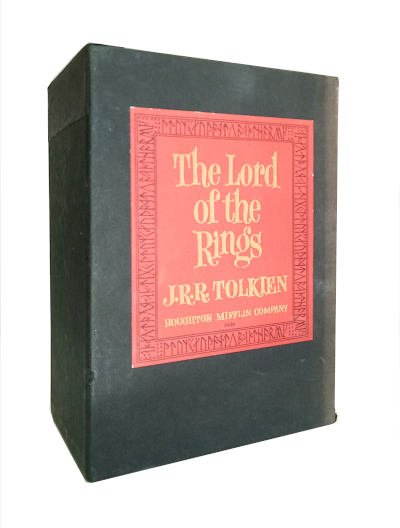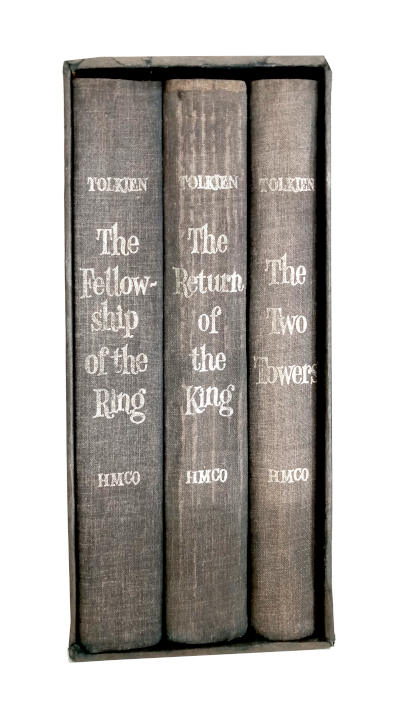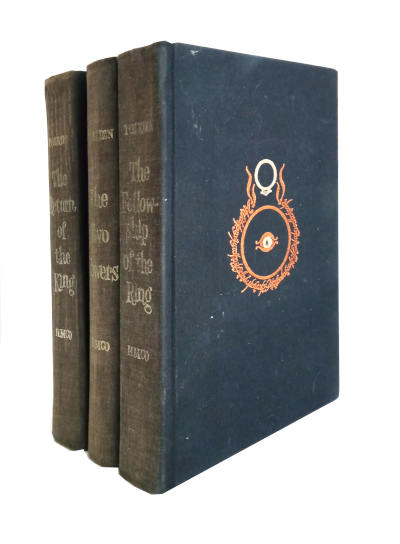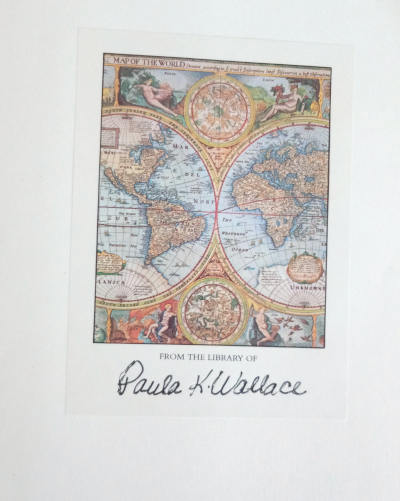An early edition: 3-volume set with slipcase. Second edition, tenth printing.
About the Book:
The original ‘fantasy’ series, and still the greatest, The Lord of the Rings has sold over 100 million copies, been translated into more than 40 languages, and has been voted the best book of the 20th century, while The Hobbit has never been out of print since first published in 1937. If there are any works of fiction that deserve to be owned in magnificent editions – these are surely the ones.
Successive generations have been spellbound by the exploits of Frodo, Gandalf and their comrades as they journey towards Mordor to do battle with the Dark Lord Sauron. There is something about the alluring world of elves, dwarves and old magic which has proved exceptionally popular, working on the imagination both as an enthralling adventure story and, at a deeper level, as ‘a comprehensive counter-myth to the story of the twentieth century’ – Independent. Tolkien’s treatment of the eternal struggle between good and evil, from stirring battles (‘as good as anything in Homer,’ according to C. S Lewis) to the conflict within every individual, is subtle, lyrical and profound.
Since the dawn of time, storytelling and the fantastic have gone hand in hand. All cultures have their myths – tales of gods and giants, monsters and marvels. An increasing interest in the roots of culture, together with a recognition of the importance of myth and archetype in understanding the human condition, led to a reflorescence of myth-based literature in the 20th century.
J.R.R. Tolkien, the reclusive, pipe-smoking Oxford don, was in the vanguard, and so great was his achievement that his name became virtually synonymous with the literature of fantasy.
The strength of Tolkien’s work is in its fidelity to its roots, which lie in the legends of the Nordic world. Tolkien believed that the roots of myth and the roots of language are one and indivisible, and he demonstrated this belief by creating an entirely new language (Elvish) with its own grammar, its own beautiful script and its own mythology. it was a rarefied and highly personal world, yet it proved a fertile soil from which his great fantasy novels were to grow.
First of these, and for many the finest, was the tale of Bilbo Baggins, the sedentary hobbit who is persuaded by the benign wizard Gandalf into joining a treasure hunt. Bilbo survives a series of chilling adventures to become the unlikeliest of heroes in his confrontation with the dragon Smaug. These adventures are drawn from mythic roots – the river of forgetfulness, the trolls turned to stone by the touch of daylight, the ring of invisibility, the monster – and their mythic power is channelled through magnificent storytelling.






